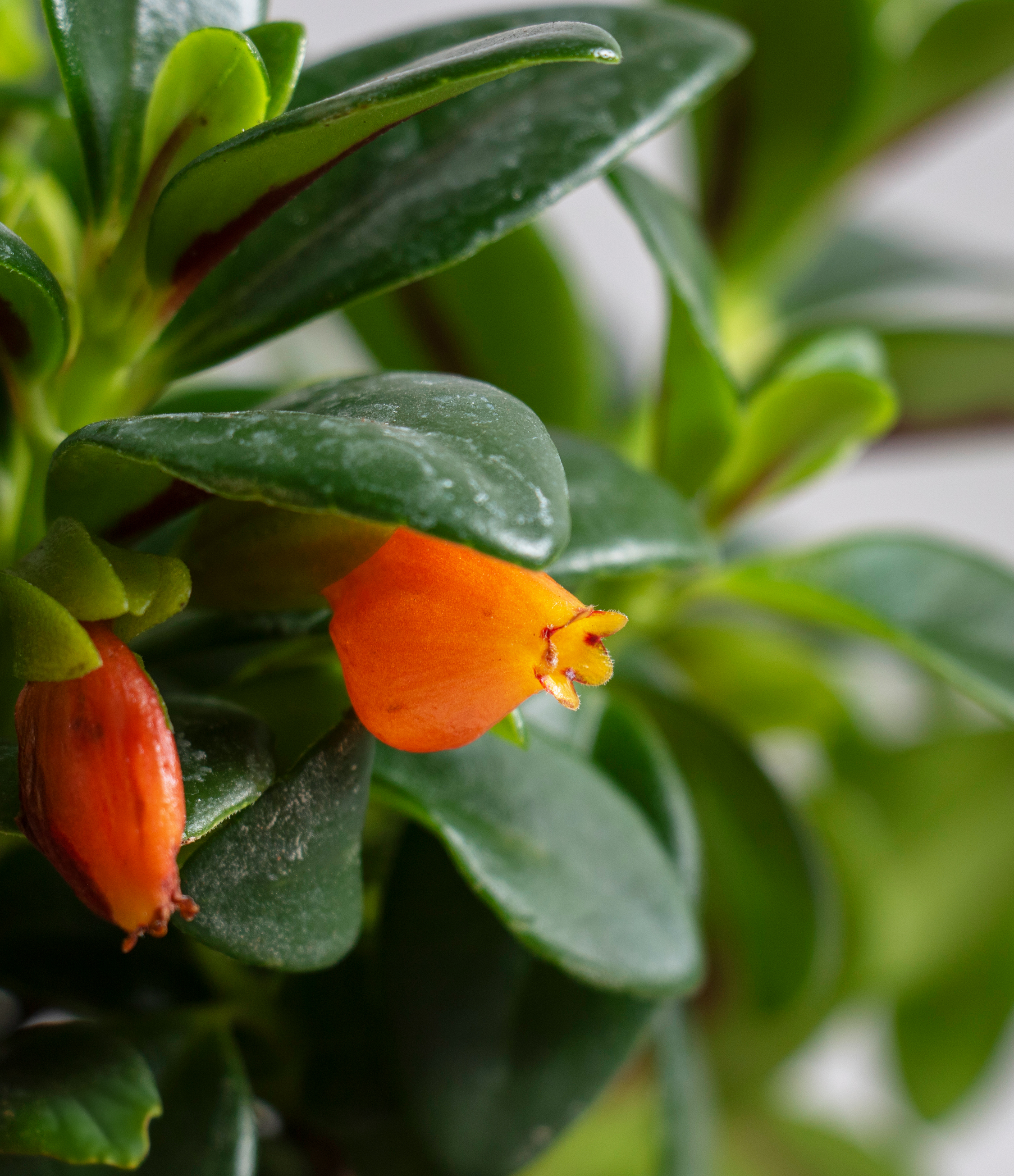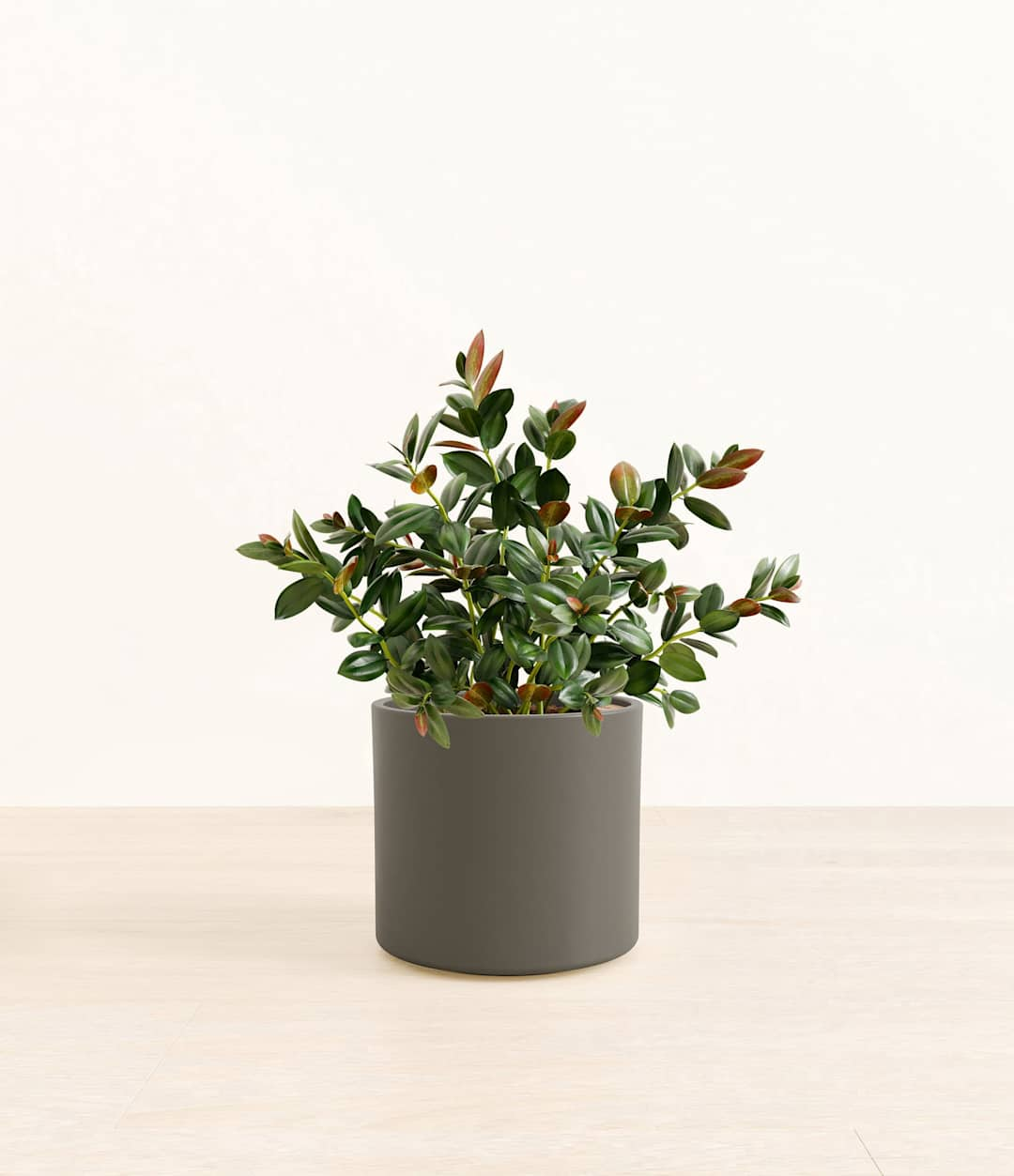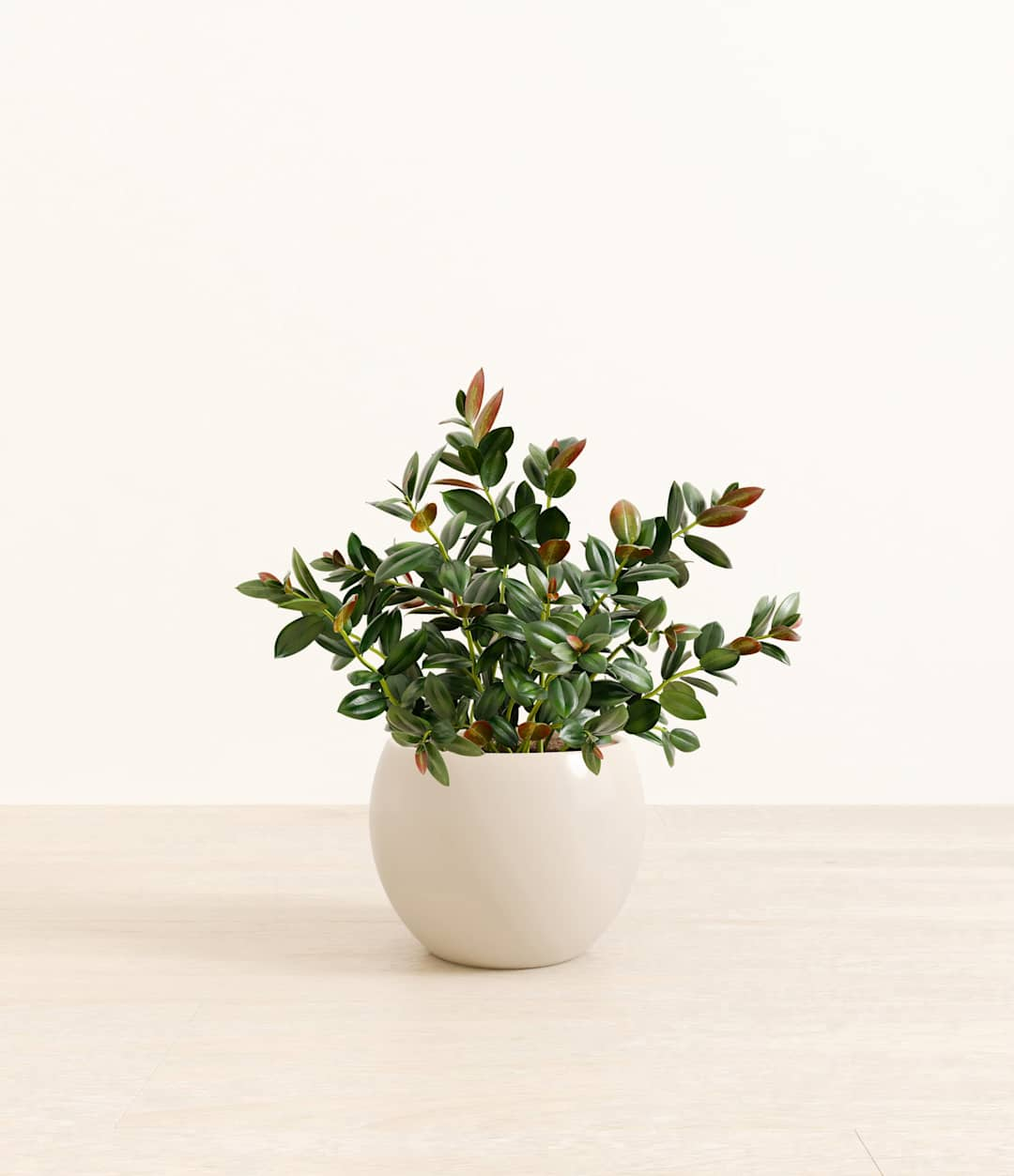How to care for Goldfish Plant
Shop this plantAbout Goldfish Plant
Originating from the humid forests of South America, the Goldfish Plant, or Nematanthus gregarius, is celebrated for its vibrant green foliage and distinctive, bright orange flowers that resemble tiny leaping goldfish. These blooms typically appear in the warmer seasons, adding an unexpected pop of color. The leaves are glossy and have a trailing habit, cascading down in a fountain-like manner, making the plant ideal for high shelves or as a dynamic centerpiece on a coffee table. Additionally, the Goldfish plant is pet-friendly, making it a worry-free choice for any space. Other common names •
Other common names
- Goldfish Vine
- Hypocyrta
- Nematanthus Gregarius
How Often Should I Water My Goldfish Plant?
With easyplant, watering your Goldfish Plant is simple. Make sure to check the easyplant reservoir once a month and fill it when empty, and you're all set!
Goldfish Plant Light Needs
Goldfish Plant grows best in a space with bright indirect light, where the sun rays are diffused. Avoid placing it in spaces with low light, direct sunlight or spaces without natural light.
For optimal growth, place your Goldfish Plant near a window that receives bright, indirect light. An east or west-facing window with filtered light is ideal. If you have a south-facing window, ensure it's diffused with a sheer curtain to prevent direct sunlight, which can scorch the leaves. Position the plant a few feet away from the window to benefit from the bright, indirect light.
Goldfish Plant Care
To help your Goldfish Plant grow optimally and maintain its vibrant appearance, rotate the pot by a ¼ turn once a month to ensure even light exposure. The Goldfish Plant benefits from regular 'deadheading'—removing spent flowers to encourage the plant to focus its energy on new growth and blooming. Prune the stems when they become dry or leggy to promote a fuller, bushier appearance. Regularly cleaning the leaves with a damp cloth helps keep the plant dust-free and healthy. Remember, these maintenance routines are normal and beneficial for blooming plants like the Goldfish Plant, ensuring it remains lush and vibrant throughout the year.
How Big Will My Goldfish Plants Grow?
Goldfish Plants grow slowly and steadily, reaching up to 2 feet in length. Their vibrant, fish-shaped blooms and glossy green leaves make them a striking addition to any indoor space. The plant’s cascading growth habit is ideal for placing on shelves or countertops, where its beauty can be fully appreciated. With proper care, including adequate light, consistent watering, and maintaining the right humidity levels, your Goldfish Plant will thrive and provide continuous visual interest.
Temperature & Humidity
Goldfish Plants prefer warm and moderately humid conditions. They thrive in environments that sit between 65°F and 80°F (18°C to 27°C). It's essential to keep the temperature above 60°F (16°C), as the plant will struggle and may drop leaves if exposed to colder conditions. Additionally, maintain a humidity level of around 40-50% to keep the plant healthy. Avoid sudden drafts and fluctuations in temperature and humidity, as these can stress the plant and hinder its growth. Using a humidifier or placing a tray of water near the plant can help maintain the desired humidity levels.
Are Goldfish Plants Toxic for Pets & Kids?
Goldfish Plants are non-toxic and safe for humans and animals alike. They are considered both pet-safe and kid-safe. While there is little danger in ingesting this plant’s greenery, it’s important to remember that this plant isn’t considered food for pets or humans. If a dog, cat, or child happens to consume any part of the Goldfish Plant, they may experience mild gastrointestinal upset or skin irritations. As such, it's best practice to keep the plant away from pets that enjoy munching on leaves and to advise children not to put the plant in their mouths.
Troubleshooting Common Problems with Goldfish Plant
If your Goldfish Plant is not producing its vibrant, goldfish-shaped flowers, it’s likely a result of not getting enough light, warmth, or humidity. Additionally, remember that it may simply not be the blooming season for your plant. To resolve this, try moving the plant to a brighter spot with indirect light or using a grow light to supplement natural light. Ensure the room temperature stays within the optimal range of 65°F to 80°F (18°C to 27°C), and maintain a humidity level of around 40-50%. If the air is too dry, consider placing your Goldfish Plant in a more humid environment like the bathroom or kitchen, or use a humidifier to increase humidity levels.
If your Goldfish Plant is affected by pests like mealybugs or spider mites, which appear as tiny, white, cottony masses or small brown or yellow spots on the foliage, use insecticidal soap or neem oil to treat them. Ensure you remove the bugs manually with a cotton swab dipped in alcohol. Overwatering can cause root rot, leading to mushy and rotten roots. For easyplant, make sure you're not overfilling the reservoir. Additionally, direct sunlight can cause leaf burn, turning the leaves brown. Move the plant away from direct sun exposure and use a sheer curtain to filter the light.
Frequently Asked Questions about Goldfish Plant Plant
- How much light does a Goldfish Plant need?
Goldfish Plants thrive in bright, indirect light. They can tolerate lower light conditions, but they will not flower as profusely. Avoid direct sunlight, as it can scorch the leaves.
- What temperature range is ideal for Goldfish Plants?
Goldfish Plants prefer temperatures between 65°F and 80°F (18°C to 27°C). They do not tolerate temperatures below 60°F (16°C) well, as colder conditions can cause the flowers, buds, and leaves to drop.
- How often should I water my Goldfish Plant?
Water your Goldfish Plant when the top inch of soil feels dry. For easyplant users, check the reservoir once a month and refill it when empty. Avoid overwatering, as this can lead to root rot.
- Are Goldfish Plants toxic to pets and kids?
Goldfish Plants are non-toxic and safe for both pets and children. However, it’s always best to keep plants out of reach of curious pets and young children to avoid any potential gastrointestinal upset or mild skin irritations from chewing on the leaves.
- Why are the leaves on my Goldfish Plant turning yellow?
Yellow leaves can indicate overwatering or poor drainage. Ensure you are allowing the soil to dry out between waterings and that your pot has adequate drainage. For easyplant users, avoid overfilling the reservoir.
- How do I encourage my Goldfish Plant to bloom?
Ensure your plant receives enough bright, indirect light. If it’s not flowering, try moving it to a brighter spot. Additionally, maintaining the right temperature and humidity levels is crucial for encouraging blooms.



